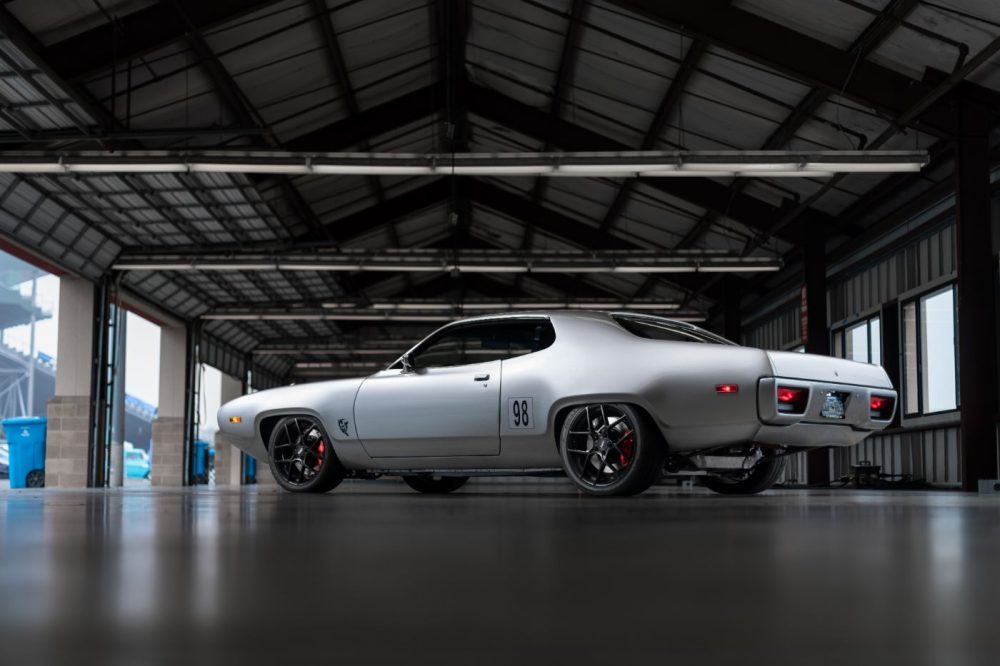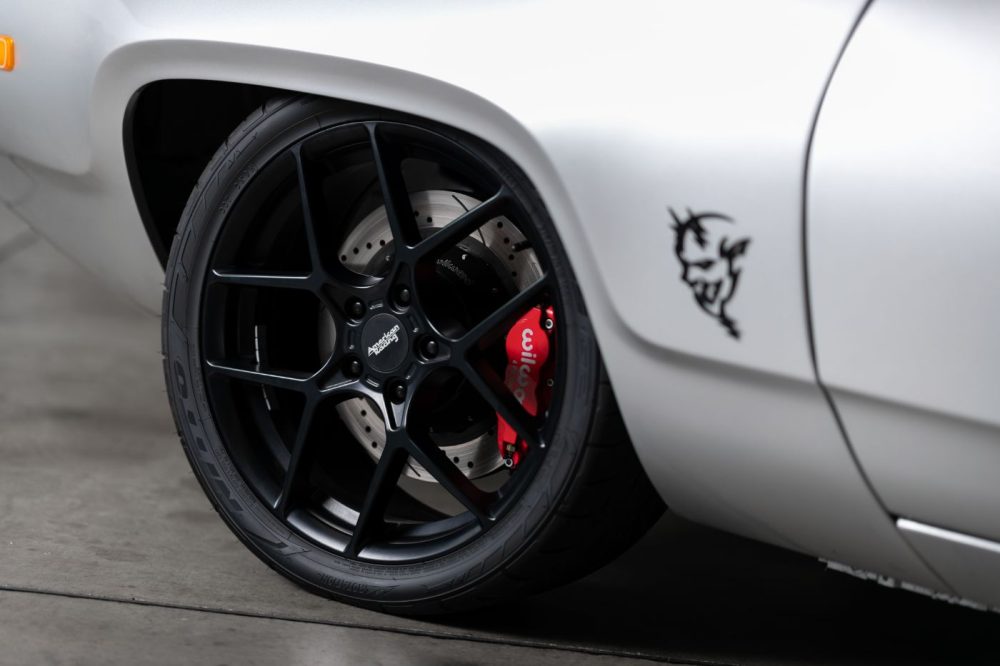
The ’72 Plymouth Satellite is a bit more obscure than the ’69 Dodge Charger from The Dukes of Hazzard or Kowalski’s white ’70 Challenger from Vanishing Point, but it’s still one of the most desirable pre-emission Mopars out there. The owner of this particular Satellite loved the looks of the car, but Hemi muscle isn’t what it used to be. So, he went searching for a way to keep the car relevant 50 years after its original build date. Thanks to a Tesla Model S Ludicrous rear drive unit and 100 kWh battery pack, it looks like he found one!
Kevin, the car’s owner, is a long-time Mopar fan and something of a car collector. In addition to this Satellite, which he bought from the son of its original owner, he also owns a turbocharged, 360ci powered V8 Dodge Dart. So, he knows a thing or two about getting these cars to move. Having done the V8 thing already and looking for a way to “future proof” his new Satellite, an EV conversion seemed like the way to go.
It wouldn’t be easy. The big V8 route is well-traveled territory – there are body-specific websites and engine builders with decades of Mopar-specific experience out there to lean on every step of the way. Kevin would be blazing his own path – but he powered ahead, and it’s hard to argue with the end results.
This is one clean fuselage-bodied Mopar!

The resulting car is something that’s commonly called a “restomod” – an older car that’s been restored with an eye toward modification or modernization (depending on who you ask). In this case, the “look” of the ’72 Satellite has been largely maintained. The most obvious external exceptions are the modern wheels with low-profile tires and the aggressive, “dropped” stance. Those modifications serve practical purposes (we’ll get to that), but the main thing is that the car looks like a ’72 Plymouth on the outside.
On the inside? The Plymouth interior looks pretty much as you’d expect it to in a well maintained, 50-year-old muscle car – except for that ultra modern, all-digital instrument cluster that shows off a host of information that would have been impossible to get into the same space with plastic spinning needles and old-school speedometer cables.



The GPS-driven speedometer is an especially nice, modern-y touch, especially since there were no GPS satellites around when the Plymouth Satellite was first built, you know?
Speaking of things that weren’t around when the Satellite was first built, a quick look under the hood (or even in the trunk) of this silent, dragstrip killer will prove – if there was still any lingering doubt – that this is a thoroughly modern wolf in classic wolf clothing.







The trunk shot above shows off another aspect of this build: the suspension. The factory Mopar suspension, whose torsion bars, multiple leaf springs, and a pinion snubber were ahead of their time, are now relatively horse-and-buggy like by today’s standards. Kevin’s reborn ’72 uses an ultra-modern, double-wishbone, fully independent, pushrod suspension that acts on the remote-mounted coilovers shown.
Similarly, the bigger, more modern wheels are much more than a stylistic choice. In Ludicrous mode, the drive units in a Tesla Model S put out some 762 hp in this vintage. That’s substantially more than the 255 hp the old 400ci Hemi V8 the car rolled out of the factory with – and that kind of power upgrade requires a similar brake upgrade to keep the whole thing, you know, survivable.

The car – which Kevin has dubbed “Project Electrolite” – is very much a runner, though still a bit of a work in progress. Kevin took his Plymouth Satellite car out to both SEMA in Las Vegas and the Holley High Voltage Experience in Northern California, where Kevin won a bracket drag race event before photographers from Holley corporate snapped these epic pictures (special thanks to my friend, Lawson Mollica, at Holley-owned AEM Electronics, for getting them to me).
You can follow along with Kevin as he further refines his Electrolite build by subscribing to his YouTube channel at this link. And, let us know what you think of this ’72 B-body coupe in the comments. Note: That’s actually NOT a “Dodge Demon” logo on the fenders. It’s close, but the horns have been cleverly replaced with lightning bolts. Because electricity.
Electrek’s Take
People often form irrational bonds with cars, trucks, and other things that go. You can blame Richard Scarry for that, maybe, but it’s more likely that it has to do with humans’ innate ability to pack bond with just about anything. (A lot of people name their Roombas, mine are “Swiipi” and “Drama Llama,” for reasons that I will be all too happy to explain in the comments.) Irrational bonds know no bounds because they’re irrational, and even though it makes absolutely zero sense to spend thousands of hours and many more thousands of dollars trying to get an old classic car or motorcycle to beat with an electric heart, people have been doing it since the first car became “old.”
As such, I choose to look on the bright side: Cars like Kevin’s ’72 Plymouth Satellite will appeal to some people who have not yet considered an EV. And once people begin to associate “electric” with “cool,” they just might just become EV owners themselves. That’s a win for everyone.
Photo: Holley, via AEM
Subscribe to Electrek on YouTube for exclusive videos and subscribe to the podcast.
Author: Jo Borras
Source: Electrek



